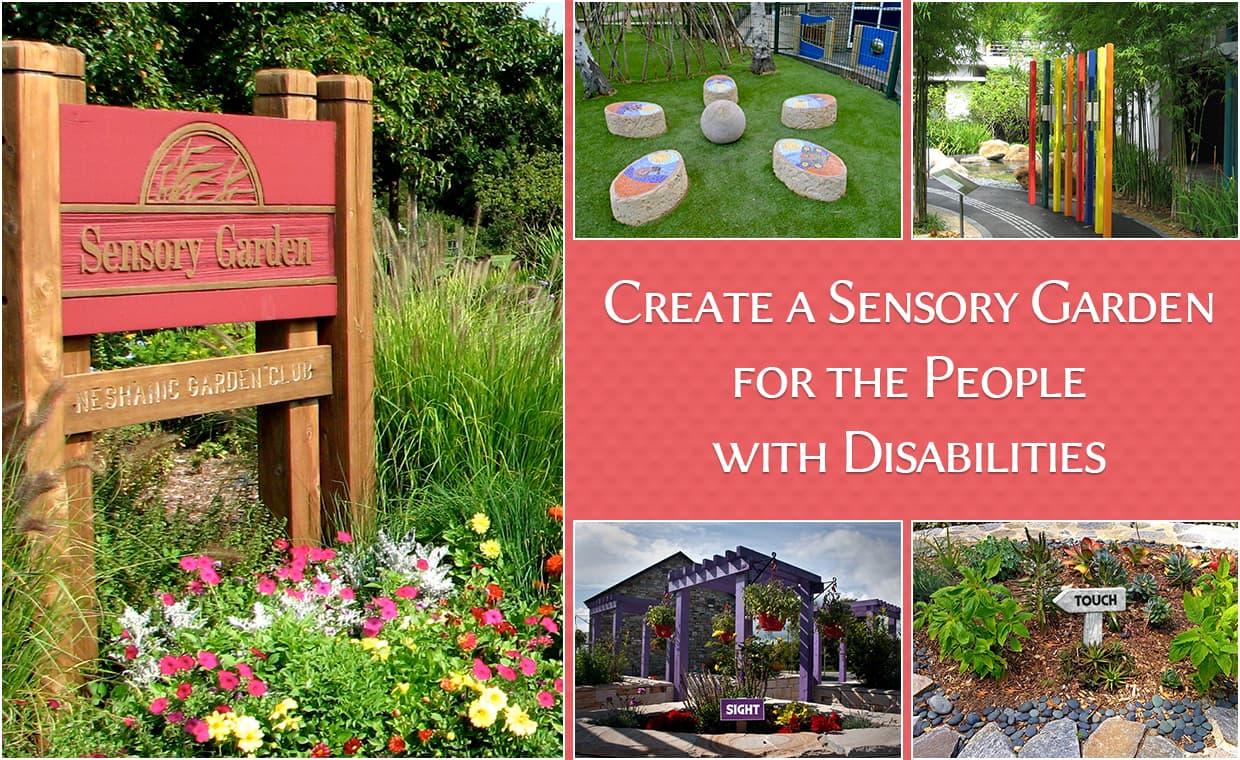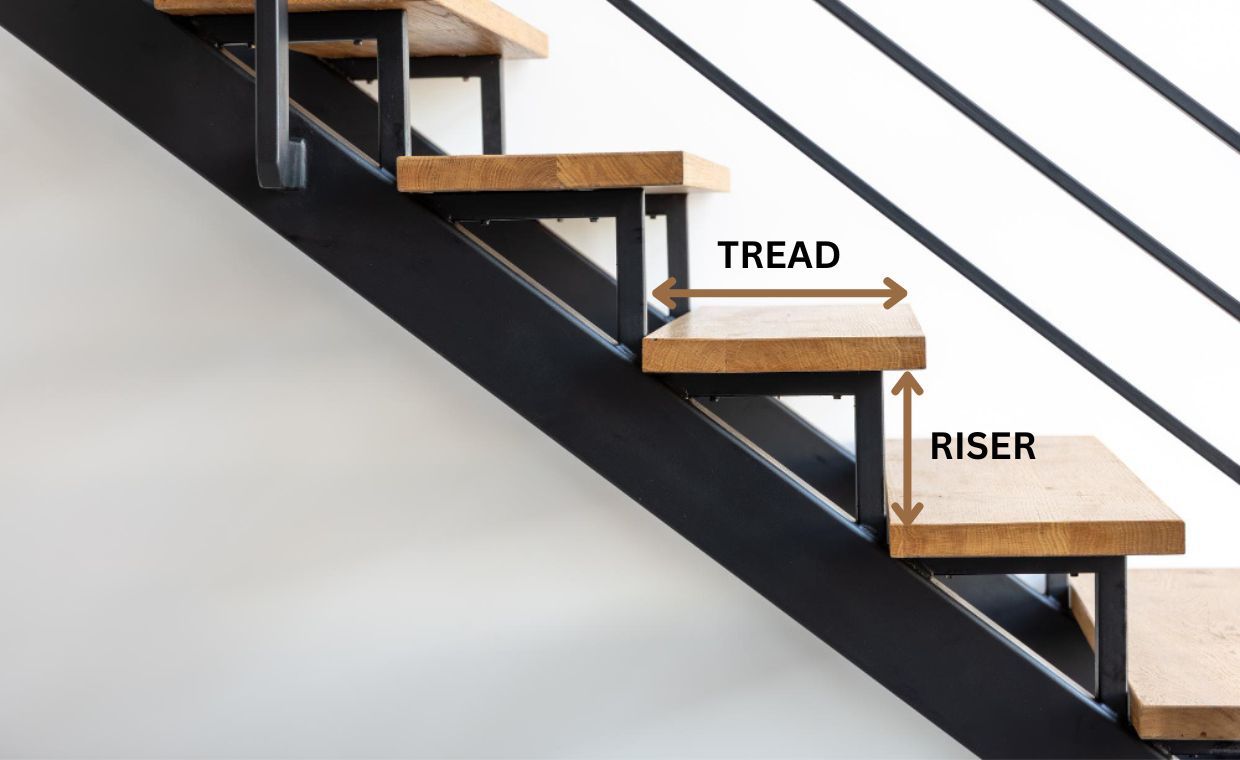
What is a Sensory Garden?
According to the ‘Y.C. Raveendra’ (the author of research paper on Sensory Gardens for Disabled: A Review), “The sensory garden is one of the theme gardens that stimulate the five senses viz. touch, smell, hear, taste and sight which provide benefit for young children to senior citizens as well as for those, who are physically and mentally challenged.” In other words, sensory gardens are the self-contained area that houses a lot of plants usually meant for enhancing the sensory experiences of the visitors. Sensory gardens can provide a sensation of touch, individually and in combination with the ways that one may not generally find it. They are, however, not only used for educational purposes but also for therapeutic and recreational purposes as well. These gardens are usually designed for people with special needs such as autism or dementia, but anybody can enjoy its beauty.
Over the years, sensory hard has proven to be a boon for people living with disabilities. Disabled people mostly face a certain challenge in managing their life and are often unable to perform many activities on their own. They face more challenges in entertaining their emotions and many often they turn ultra-sensitive due to the inadequate or irregular sensory gratification because of their unusual physical development. Sensory gardens help them in keeping their senses entertained, stimulated, and positively pacified. This feast of senses work like stimulants for the people with physical disability.

Well, the creation and maintenance of sensory gardens has proven to be helpful for kids as well as for adults suffering from disabilities. Most of the schools for disabled students have designed the sensory gardens indoors and outdoors to teach the kids about the different senses. If you have a disabled adult (Divyang) in your home or within your family member, you should too create a sensory garden in or around the house. They can bring huge positive differences in the emotional health of that special person.
While it is a blessing for physically challenged people, it is helpful and stimulating for normal people as well. Sensory gardens can exert an important and entertaining role in generating a positive movement for people suffering from autism, spinal cord injury, acquired brain injury and likewise. There are possibilities that a sensory garden may contain features such as scented and edible plants, sculptures, handrails, water designs, and more for entertaining sense in a positive way.
The design of sensory garden depends on the emotional need of the person expected to visit the place. Most of the sensory gardens include music also for creating some added advantages. The sensory gardens are usually designed to meet the different sensory needs and functions as an emotional stimulant for the visitors. Based on the equipment arranged, it can eventually lead to learning and educational outcomes for the people while they will be enjoying the closeness to nature and positive nurturing of emotions.
These special gardens often contain features such as wheelchair and other items usually required by physically challenged people. The strategic layout eventually helps in the reflex and development thereby aids in promoting journey through senses and by natural boosting of consciousness, awareness, and emotional satisfaction. This eventually contributes in bringing out a positive learning experience.
Sensory Garden for Disabled People is Different for Different People
A sensory garden is a collective natural design for people with physical and emotional challenges. However, the concept of a sensory garden can mean different for different people. The garden is usually developed to boost the activities and interactions between disabled people. Nonetheless, at the same time, it is a space where one can seek some peaceful time alone. Most people often choose sensory gardens for performing meditation to boost up their senses.
How a Sensory Garden acts Different from the Ordinary Gardens?
One may not realize but sensory gardens, in general, are very much different from the ordinary gardens, not only in terms of uses but in terms of its inherent benefits. Although both are meant for recreational purposes, the sensory gardens have a therapeutic and educational value integrated to its purpose besides its aesthetic values. Despite being similar in many aspects, the difference between sensory gardens and general gardens is very much predominant.
Most of the difference occurs between a sensory and an ordinary garden because of the plants, materials and features used in these two pieces. While the ordinary gardens use it only for decoration purposes, these garden components are usually planted in a sensory garden to boost a feeling of nourishment of the senses. The sensory gardens usually have qualities required to boost up the sensory features for nurturing different senses such as seeing, tasting, hearing, smelling and touching. While these aspects play an important role while developing a sensory garden, nonetheless, other factors too have a crucial role to play such as gravity, temperature, space and enclosure. These are however much needed only for the formation of a multi-sensory garden at its best.
How to Create a Sensory Garden?
While sensory garden design seems like a big deal, it is not. One can easily create a sensory garden using basic things as long as, they have an idea. Some of the important things you should take into consideration while building a sensory garden include the following:
● Choose the Right Space while Designing a Sensory Garden
The size of the sensory garden can vary from being limited to a box to being expanded around a huge space. If you are installing the sensory garden around school or hospital, you need to take into consideration how much space does you have and how much you can utilize actually.
The shape and size of the garden usually depends on how space is being planned to use. Often people choose either too big or too small space for making a garden. Although it is extremely fine, it is also necessary to take into consideration that bigger space requires extensive maintenance that is why one needs to be careful about the capacity to maintain the piece perfectly before designing it.
● Easy Accessibility for people into a Sensory Garden with Physical Disabilities

Since these gardens are built for people with disabilities, accessibility has an important role to play. People having walking difficulties often have a problem accessing the property. As a result, it is necessary to choose a design that promotes accessibility.
● Seating Style for Disabled Garden

The sensory gardens should have proper seating area so that people with compromised mobility can rest. Experts recommend that there should be enough seating space around the sunny as well as shady areas. Moreover, these seating styles can also contribute toward enhancing the entertainment around the designer space.
● Consider Shape of the Sensory Garden
People usually don’t take shape into consideration while designing a sensory garden. You should make it a point to include features such as ponds, trellis dividers, flower borders, and more to create the desired shape. These, however, will not only have an impact on the overall look but will also contribute toward increasing the functionality around the space.
The shape of the garden also depends upon the requirements of the disabled people and their family. For allowing people using wheelchairs, you need to create space with easy corners and ergonomic slopes. Narrow gardens can be an efficient space for mystery creation by including bamboo and hedging around the entrance.
● Importance of Materials and Features while Designing Sensory Garden

Materials and features play an important role to play in the making of a sensory garden. Raised plants can be a great addition if maintenance is a problem. Moreover, the texture of the wood has an important role to play. If you do not have much space around the garden, you should prefer including trellis. Not only does the trellis create space but it also increases the privacy. Pebbles can be one of the best additions to boost sensory stimulation and enhancing the appeal. You have a wide range of materials to choose from for boosting sensory experience and enhancing the aesthetic appeal. You can however always include wind chimes, upturned tin baths and various sculptures to add beauty and sensory appeal.
What are the Senses You Get to feel in a Sensory Garden?
A sensory garden contributes towards the stimulation of all five senses, hearing, touching, smelling, seeing and tasting. At the same time, most of them have extra features such as gravity, enclosure and temperature. To boost up the different senses, different things are included in the sensory garden such as:
01. Sense of Sight in a Sensory (Disabled) Garden

Visual impact has a vital role to play in the garden for senses. Experts recommend adding more greenery to boost up the sense of sight. You can include other things such as flowers, leaves, barks, berries, lichens and mosses or any other colour changing substances. Bright coloured flowers such as yellow and red can stimulate the vision to an essential extent. You can also include plants such as marigold, red-hot poker, sunflowers and more to stimulate the appeal of vision and merriment with colours.
02. Importance of Sense of Touch in a Sensory Garden

Believe it or not, but every touch has an important role in scented garden. Different plants in garden of senses offer a different sense of touch such as wide, oval, elliptical and more shapes are indeed an attraction. You can also include rough, smooth, grooved pathways for the challenged people to feel. Apart from that, you can include pebbles, gravel, shingles and polished glass pieces as well. You can have different flooring materials for all different pathways leading to different destinations. For families of autistic children, thoughtful consideration also needs to be given to bathroom accessibility and design to encourage independence. If you are seeking guidance on how best to adapt routines or provide the appropriate environment to potty train autistic child, utilizing specialized advice can help support both sensory needs and behavioral readiness.
03. Importance of Sense of Hearing in a Sensory Garden

Hearing is one of the most problematic physical challenges to deal with. Nonetheless, you can include bamboo or any other short and tufty plants for sensory experience. You can also throw out the rattling seeds for a better experience for hearing impaired people.
04. Sense of Taste

To stimulate the sense of taste, one should grow vegetables and fruits around the garden. However, this entirely depends on your available space, budget, and on personal choice.
05. Importance of Sense of Smell in a Disabled Garden

When you choose plants for creating the layout for a sensory garden design, it should contain high-scented flowers or shrubs such as Mexican orange blossom. Scents that fill the air and can be smelt without touching the plant are ideal for gratification of your smelling ecstasy. You may also include plants that have high aromatic leaves. Lavender and rosemary plants can be a great addition around the garden.
Benefits of a Sensory Garden
We have already discussed that a sensory garden can be extremely beneficial for people suffering from disabilities. But some of the prominent leverages of a sensory garden include the following, which can benefit everybody.
01. Sensory Stimulation
The basic purpose of a sensory garden is to stimulate the senses. Many people these days suffer from the loss of certain senses. Allowing them to interact freely and naturally can help boost these senses by access to nature and sunlight. The sensory garden can further boost the limbs to move spontaneously.
02. Sensory Garden Promotes Physical Activity

Disabled people often refrain from walking. Nonetheless, it is also not possible to take them out in public as they will be at a constant threat. However, walking, gardening and moving casually around the garden can be one of the great boosts to the physical activity. It is extra beneficial for people suffering from degenerative brain diseases such as Alzheimer and Dementia. It can help people by including physical movement, by boosting cardio-respiratory fitness and increasing the overall physical strength.
03. Reducing Aggression and Depression By Adding Sensory Experience
If you have dealt with Divyang (disabled) people, you must be aware that they can be overly aggressive and agitated if they face some triggers or in some cases even without the trigger. This however, imposes a negative impact on their mental health. The main function of the sensory gardens is to boost senses but it is also aimed at encouraging people to take part in physical activities. However, it can be extremely beneficial as it helps to reduce negative behaviour. Sensory gardening can contribute a lot towards reducing negative behaviour. Most sensory gardens for disabled have a small area designated for people experiencing uncontrolled outburst. Enjoying these areas can further help in removal of tension and frustration of the diseased people.
04. Sense of Community
Sensory gardens promote people coming together and creating something new and positive for all the visitors. Interacting together can help to promote the feeling of community which is extremely beneficial for all. Working together can help to boost the sense of community.
05. Meditation and Stress Release
Apart from physical health, taking care of mental health is necessary too. Sensory gardens are not only meant for physical healing but also for mental healing. It provides an efficient space for emotional and spiritual healing. Sensory gardens usually contain private space meant for relieving stress or for meditation. Sweet smells and the fizzling flow of water can help to promote calming sensation. Releasing stress and promoting relaxing mood can be a great boost for reducing blood pressure thereby it helps in boosting faster physical healing.
06. Reduced Fatigue and Mental Clarity
Sensory gardens have proven to be extremely helpful for reducing fatigue and boosting your mental stability. Reduced fatigue proves to be extremely helpful for boosting mental clarity for all of us. The sense of smell and fresh air can help a lot to calm down and relax thereby increasing mental balance and overall positive vibes around you.
07. Personal Achievement
The sense of achievement is extremely important for people living with disabilities. This sense of self-accomplishment can be achieved by visiting a sensory garden or participating in the sensory gardening. Growing and caring for plants helps in developing new areas of interest, which can be extremely beneficial.
Conclusion
You should either create a sensory garden on your own or ask some experts to do it for you. Nonetheless, it is necessary to note that a sensory garden can boost all significant health benefits in the long run for all of us. Being normal and healthy, it is our sincere duty to help or motivate the physically challenged people, rightly defined as “Divyang” by the Honorable Prime Minister of India, Shri Narendra Modi. Let’s contribute our best for these Divyang and commit ourselves for their well-being and happiness.
If you have a hobby of gardening, then you must read below articles also. Hope these will be helpful to you.
10+ Backyard Garden Ideas For Your Home Garden!
Everything You Need to Know About Pot or Container Gardening
How to Start a Kitchen Garden?
How to Make Your Own Terrace Garden – Step-By-Step Guide!
Image Courtesy: Image 2, Image 4, Image 8
Author Bio
Kazi Ubaid – Kazi Ubaid is a freelance writer, professional blogger, ghost writer and lifelong learner with an ongoing curiosity to learn new things. He uses that curiosity, combined with his experience as a freelance business owner to write about subjects valuable to small business.
































